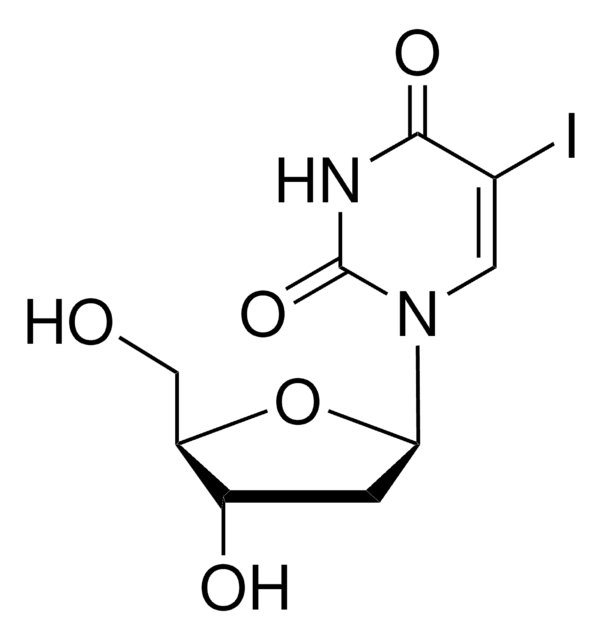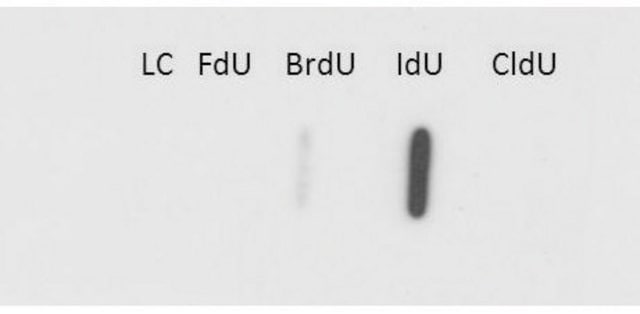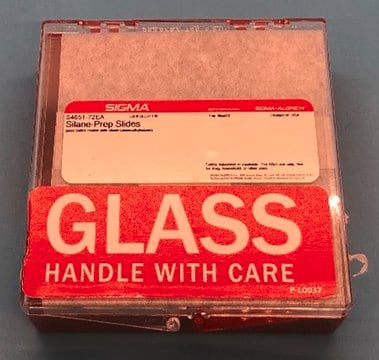C6891
5-Chloro-2′-deoxyuridine
thymidine analog
Sinonimo/i:
CldU
About This Item
Prodotti consigliati
Saggio
≥98% (HPLC)
Forma fisica
powder
Solubilità
1 M NH4OH: 20 mg/mL, clear, colorless to faintly yellow
Temperatura di conservazione
−20°C
Stringa SMILE
OC[C@H]1O[C@H](C[C@@H]1O)N2C=C(Cl)C(=O)NC2=O
InChI
1S/C9H11ClN2O5/c10-4-2-12(9(16)11-8(4)15)7-1-5(14)6(3-13)17-7/h2,5-7,13-14H,1,3H2,(H,11,15,16)/t5-,6+,7+/m0/s1
NJCXGFKPQSFZIB-RRKCRQDMSA-N
Cerchi prodotti simili? Visita Guida al confronto tra prodotti
Categorie correlate
Applicazioni
- study cell cycle dynamics by immunohistochemical analysis and double S-phase labeling using animal models
- analyze cell cycle length using an animal model
- label HEK293T cells for molecular combing assay
Azioni biochim/fisiol
Avvertenze
Warning
Indicazioni di pericolo
Classi di pericolo
Acute Tox. 4 Dermal - Acute Tox. 4 Inhalation - Acute Tox. 4 Oral - Carc. 2
Codice della classe di stoccaggio
11 - Combustible Solids
Classe di pericolosità dell'acqua (WGK)
WGK 3
Punto d’infiammabilità (°F)
Not applicable
Punto d’infiammabilità (°C)
Not applicable
Dispositivi di protezione individuale
dust mask type N95 (US), Eyeshields, Gloves
Certificati d'analisi (COA)
Cerca il Certificati d'analisi (COA) digitando il numero di lotto/batch corrispondente. I numeri di lotto o di batch sono stampati sull'etichetta dei prodotti dopo la parola ‘Lotto’ o ‘Batch’.
Possiedi già questo prodotto?
I documenti relativi ai prodotti acquistati recentemente sono disponibili nell’Archivio dei documenti.
I clienti hanno visto anche
Il team dei nostri ricercatori vanta grande esperienza in tutte le aree della ricerca quali Life Science, scienza dei materiali, sintesi chimica, cromatografia, discipline analitiche, ecc..
Contatta l'Assistenza Tecnica.










